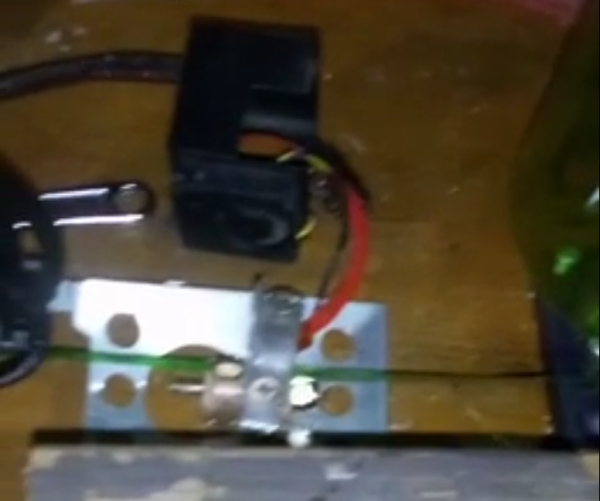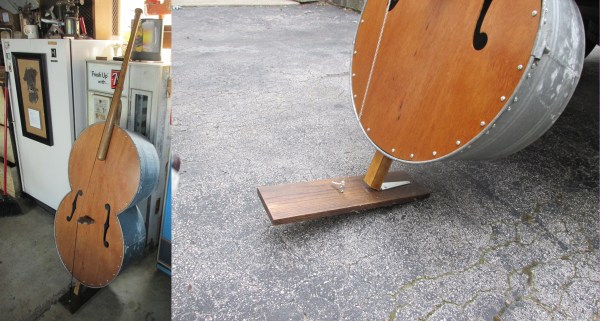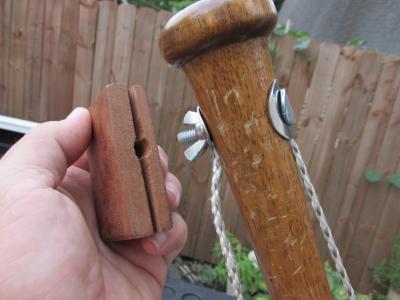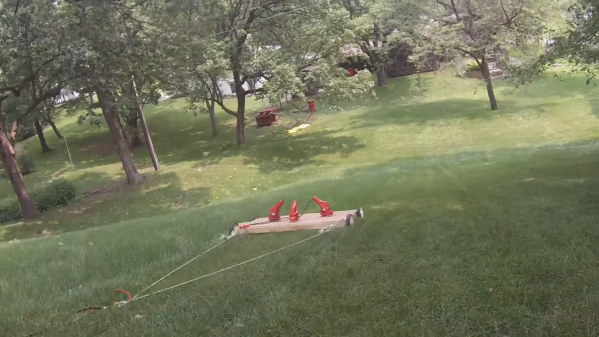Many have complained about the hassle of rewinding their weed whackers with fresh trimmer line. Manufacturers responded by making models with solid plastic blades instead. Some of these suck, though, like this Ozito model belonging to [Random Sequence]. 3D printing was the way forward, adapting the blade trimmer to use traditional line.
The design is simple. [Random Sequence] created a small plastic tab which matches the attachment tab of the Ozito trimmer’s plastic blades. On the end of the tab, in lieu of a blade is a round slot into which a length of trimmer line can be inserted. The trick is to use a cigarette lighter to slightly melt a bulb onto a length of trimmer line so that it doesn’t pull through the slot. Centrifugal force (argue about it in the comments) keeps the line from falling out.
[Random Sequence] prints them in PETG, but notes that the part could benefit from additional strength. They do break when hitting tough objects, much like the stock trimmer blades do. Also, unlike a bump-feed trimmer head, there’s no way to auto-feed more line. Instead, one must simply assemble more of the tab-adapters with fresh line manually.
Overall, though, it’s a great way to fit stronger, more capable trimmer line to a weed whacker otherwise hamstrung by weak blades. It’s reported to work with Ozito and potentially Bosch tirmmers, and parts are on Thingiverse for those wishing to print their own.
Just as string trimmer line was once used as 3D printing filament, you can also go the other way, turning old plastic bottles into trimmer line. If you’ve whipped up your own fun hacks for tools in the garden, don’t hesitate to let us know.
Sound off with your best name for a weed whacker in the comments, too. The Australians may hold the title with “whipper snipper,” but we’re open to other submissions!














